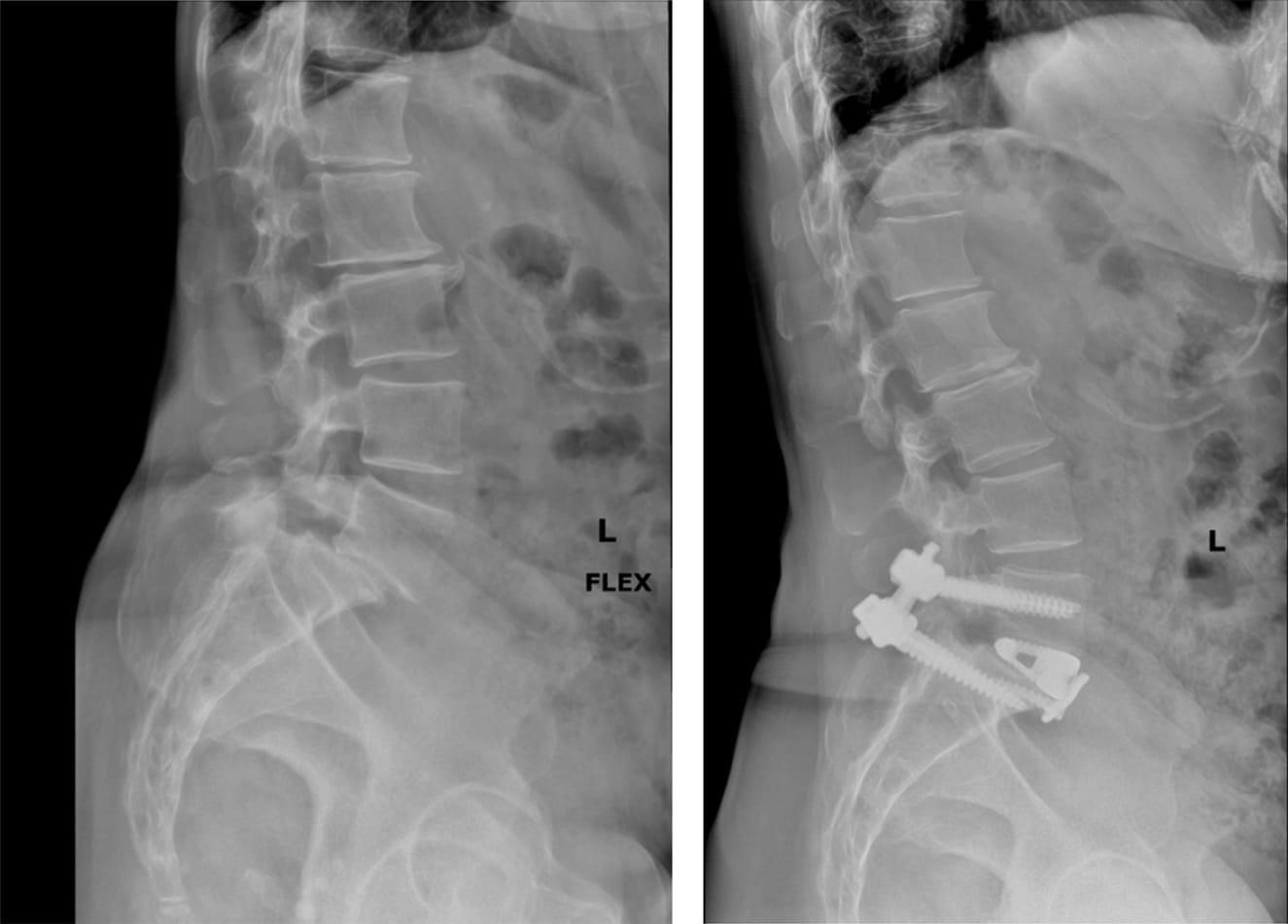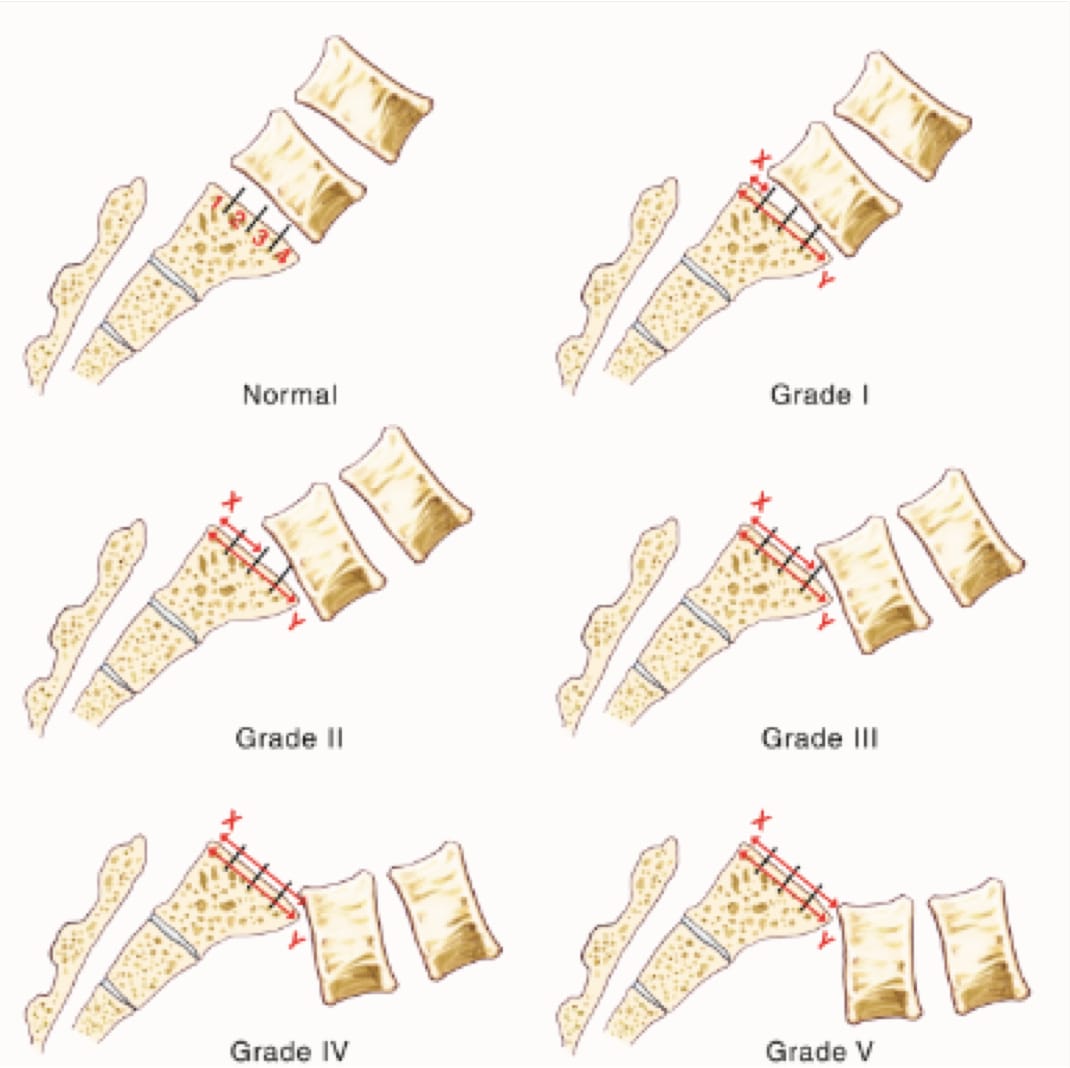While people often talk about a “slipped disc”, doctors do not ordinarily use that term. A spondylolisthesis is a true slippage of the spine. Spondylolisthesis comes from the Greek – spondylos, meaning “vertebra” and olisthesis, meaning “dislocation.” It occurs when one vertebra slips forward on the adjacent vertebrae. During this condition, one of the vertebrae in the spinal column can move out of place (sideways, backward or forward) in relation to the vertebra below. This can cause severe back pain and neurologic problems as a function of spinal instability.
When there is displacement of the vertebra the space in the spinal canal becomes narrow, this may also put pressure on adjacent nerves causing neurologic symptoms. Although spondylolisthesis can take place anywhere in the spine, the lower back (lumbar spine) is the most typical area affected. To learn more about Dr. Stieber's NYC spondylolisthesis surgery call today for your consultation.

This type of spondylolisthesis is caused by a fracture of the pars interarticularis or isthmus, the bony bridge that connects the facet joints. It is often associated with sports that involve repetitive stress to the lumbar vertebrae and/or entail hyperextension of the spine. If a defect in the pars interarticularis can be identified but no slippage has occurred, the condition is termed spondylolysis. If separation or displacement of this fracture occurs, the vertebra will disconnect from the facet joints that normally function to restrain the spine and maintain normal spinal alignment. The resulting slippage of the vertebrae is termed a spondylolisthesis.
This type of spondylolisthesis is most often seen in older patients. In degenerative spondylolisthesis, there is no pars defect and the vertebral slippage is seldom greater than 50%. This type of slippage is caused by arthritis of the paired facet joints in the back of the spine along with degeneration of the intervertebral disc. Arthritis of the joints can cause the joints wear-away, to fit loosely and be painful. This may create instability of the spine with slippage of the vertebrae and further wear and tear on the intervertebral disc.
This condition is present from birth and is caused by abnormal bone formation in the spine. Spinal misalignment puts the vertebrae at greater risk for slipping out of place.
This condition is brought on by infection, abnormal growth such as tumors that can create bone weakness or any type of bone disease (e.g., osteoporosis).
Vertebrae can become displaced as a result of surgery.
Direct injury to the spine can cause spinal fractures or displacement of vertebrae.
Dr. Stieber’s goal is aimed toward restoring spinal stability and preventing ongoing damage to the nerves. We focus on early detection and diagnosis.
The degree of vertebral slippage is obtained from spinal x-rays and graded as follows:
Grade I: 1-25% Grade II: 26-50% Grade III: 51-75% Grade IV: 76%-99% slip. Grade V: Complete slip (100%), known as spondyloptosis.

Some cases of spondylolisthesis can be handled with short-term bed rest, activity restriction, medication, and other non-operative options. If your condition does not improve with conservative treatment, Dr. Stieber's NYC spondylolisthesis surgery can help to relieve pain and increase the level of function in your daily activities. Spinal fusion is typically necessary to stop any slip progression and stabilize the spine. Dr. Stieber employs the most current minimally-invasive techniques when spinal stabilization is required allowing shorter hospital stays, decreased pain, more rapid recovery, and a return to an active lifestyle.
Dr. Stieber considers all your symptoms when determining treatment, this would include the degree of displacement and other factors such as unmanageable pain and neurological symptoms. Most cases of spondylolisthesis are Grade I or II. As a general rule, more extreme slips (Grades III and higher) are dangerous conditions and require surgical intervention even when they do not cause symptoms. Dr. Stieber prides himself in delivering among the top spondylolisthesis surgery New York has to offer and as always, he and his staff ensure that all patient questions and concerns are thoroughly addressed.
© Stieber MD. All Rights Reserved. Designed & Developed by Studio III
Alternate Phone: (212) 883-8868